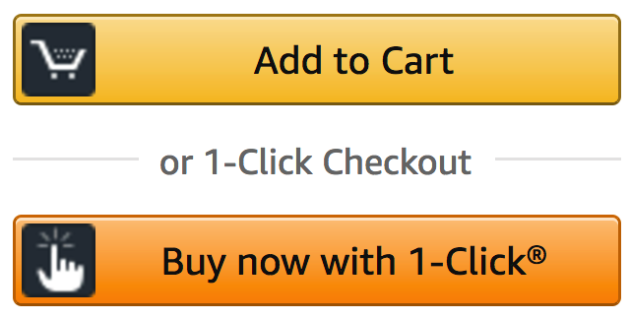Amazon真是一家神奇的公司。十年前,Google和Apple很热,一个是初创没几年,迅速在新市场挑翻了老巨头Microsoft;另一个是创始人被赶走,沉沦了多年之后,终于又在创始人手中戏剧性复兴的。结果几年过去,另一条曲线悄悄地挤过来,令人颇感意外。
那Amazon究竟做对了什么,以致于现在活得这么滋润呢?我想从致股东信来探究一番。
本系列此前的文章:
1998
开篇表态客户第一:先客户,再销售额,最后产品。
The last 3½ years have been exciting. We’ve served a cumulative 6.2 million customers, exited 1998 with a $1 billion revenue run rate, launched music, video, and gift stores in the U.S., opened shop in the U.K. and Germany, and, just recently, launched Amazon.com Auctions.
这里我学到一个新词叫 revenue run rate。注意到它是因为后文说
Sales grew from $148 million in 1997 to $610 million – a 313% increase.
说好的 $1 billion呢?
查了一下发现

对于一个迅速增长的数字来说,选择年末的一段时间,算成年化,可比全年合计好看多了。
回顾1998大事的时候,打我脸了,因为客户的说明排在了上面那个 $610 million后面。
Cumulative customer accounts grew from 1.5 million at the end of 1997 to 6.2 million at the end of 1998 – an increase of over 300%.
Despite this strong new customer growth, the percentage of orders placed on the Amazon.com Web site by repeat customers grew from over 58% in the fourth quarter of 1997 to over 64% in the same period in 1998.
核心指标很明确,有多少人来店里买东西 & 有多少回头客。
提到提到客户的时候,有这几个表述:
We intend to build the world’s most customer-centric company.
I constantly remind our employees to be afraid, to wake up every morning terrified. Not of our competition, but of our customers.
And we consider them to be loyal to us – right up until the second that someone else offers them a better service.
这一年,Amazon推出了 1-ClickSM shopping。
We significantly improved the customer experience, with innovations like 1- ClickSM shopping, Gift Click, store-wide sales rank, and instant recommendations.
这个1-Click专利(US 5960411)在1999年9月获批,Amazon转身就把实现了类似功能Barnes & Noble起诉了,B&N很快把自家网站的1 click加了一步确认,改成了2 clicks。官司一直打到2002年。此间,Amazon于2000年将该专利授权给Apple,若非如此便捷的付费方式,iTunes Store后续的发展恐怕会受点挫折。
在2017专利失效后两天还专门有篇文章1发在Wharton的知识库上,分析其作用。其中写道
“When we write the history of electronic commerce, the 1-Click patent … allowed Amazon to create a very strong position in the market,” said R. Polk Wagner, a professor at the University of Pennsylvania Law School and an expert on patent law. “Most importantly, it allowed Amazon to show customers that there was a good reason to give them their data and the permission to charge them on an incremental basis. It opened up other avenues for Amazon in e-commerce. That is the real legacy of the 1-Click patent.”
想要客户购买体验好,消费过程便利是很重要的因素。线下店的高频消费熟客可以记账、赊账,每隔一段时间一起支付,是建立在买卖双方在物理世界互相认识,违约的代价是上门讨债、街坊邻居唾弃;而线上的交易,尤其是1998年的线上,基本可以认为是匿名的,不存在这样的违约代价,当然就只能先款后发货。可支付环节恐怕是剁手全过程转化率最低的一步,掏钱这个动作天然就让人清醒,让人再次思考钱和货到底谁更得自己欢心。一旦让客户在某次消费冲动之中把这个1-Click给开通,后续的阻碍就大大降低了。
在不开通1-Click的时候,我只会对free的杂志一通乱点,或者事先决定了要买的书,不管是几块还是几十块,下单,等Kindle同步。
可是开了1-Click,那些0.99、1.99、3.99标价的书,只要标题感兴趣,评价超过4星,很可能也就点一下买了。心里觉得反正就是一瓶矿泉水的钱,买不了吃亏买不了上当。省去了N次确认付款方式(输信用卡号、CVC)的麻烦,确实是个deal maker。
后来,国内电商都踊跃用现金红包鼓励绑卡,小额免密,指纹支付、刷脸支付,无不是在绞尽脑汁让用户享受1-Click的便利,让自己享受上升的销售额。
这一年,Amazon开始了实时商品推荐。
虽然我找到的最早的论文是2003年的 Amazon.com Recommendations: Item-to-Item Collaborative Filtering2,但专利(US 6266649B1)确实在1998年底就授权了,论文一作和专利发明人排第一的都是Gregory D. Linden,想必是同一个技术。
推荐系统是否有效?多年以后答案很明显了。麦肯锡2013年的一篇文章3提到
35 percent of what consumers purchase on Amazon and 75 percent of what they watch on Netflix come from product recommendations based on such algorithms.
研究者的精力都花在如何把推荐做得更快,快到购买时实时呈现。想必背后的假设是乘胜追击、趁消费者脑子发热的时候多引诱他们下单。但这个快就是好的假设是否成立呢?多年后的真相是实时推荐还不如email推荐4
In fact, the conversion rate and efficiency of such emails are “very high,” significantly more effective than on-site recommendations. According to Sucharita Mulpuru, a Forrester analyst
这个分析结果,至少在Amazon的购物场景下,我可以找个理由来说服自己。比如我在Amazon买书,刚买完一本,马上给我推荐同主题的或者同作者的,我不见得会下单的。但是买的那本到手读了一部分或者读完之后,我带着问题,或者好奇,是更有可能在选择下一本读什么的时候,受到推荐的影响。或者说,此时与其说推荐算法决定了我的购买选择,不如说它猜中了我的购买选择,使得我直接点链接下单比去其他对手平台上搜索后再下单更方便,最终结果是我还在他家平台买了这些商品。
描述1999目标的时候,再次不提具体的销售额目标。
We plan to invest aggressively to build the foundation for a multi-billion-dollar revenue company serving tens of millions of customers with operational excellence and high efficiency.
投资包括物流体系、系统容量、品牌承诺、产品和服务开发、人才储备和流程改善等几方面。这些统统都是要砸钱的。
We face many challenges and hurdles. … and the need for large continuing investments to meet an expanding market opportunity.
The most important thing I could say in this letter was said in last years’ letter, which detailed our long-term investment approach. … I invite you to please read the section entitled It’s All About the Long Term. You might want to read it twice to make sure we’re the kind of company you want to be invested in.
要钱的同时直截了当地声明,我是打算长期砸钱的,追求短期利益的投资者,可能会失望。
(下回继续)
1 Why Amazon’s ‘1-Click’ Ordering Was a Game Changer - Knowledge@Wharton, https://knowledge.wharton.upenn.edu/article/amazons-1-click-goes-off-patent/ ↩2 https://www.cs.umd.edu/~samir/498/Amazon-Recommendations.pdf ↩3 How retailers can keep up with consumers, https://www.mckinsey.com/industries/retail/our-insights/how-retailers-can-keep-up-with-consumers ↩4 Amazon’s recommendation secret, https://fortune.com/2012/07/30/amazons-recommendation-secret/ ↩
